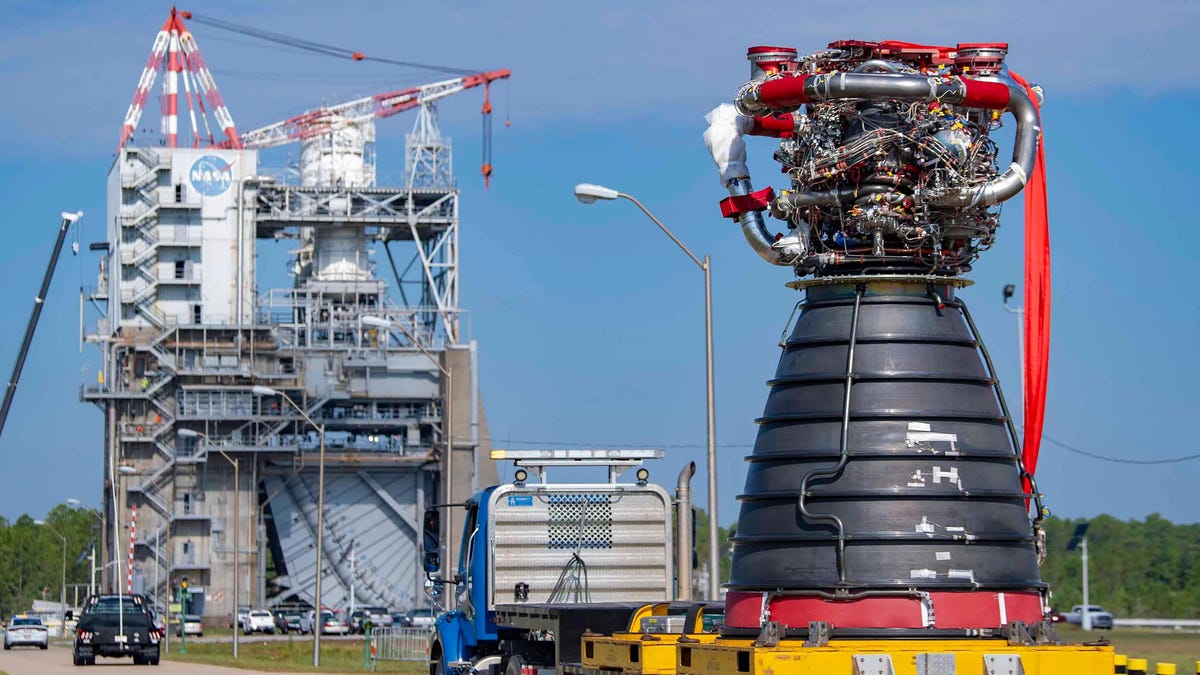
NASA is gearing up to start a crucial series of tests on the updated RS-25 engine, which will power the Space Launch System (SLS) rocket for upcoming Artemis missions to the Moon.
The RS-25 engine, pivotal during the Space Shuttle era, continues to be a key focus as NASA looks to future Artemis missions. The upcoming certification tests, scheduled to extend into 2024, will take place at the Fred Haise Test Stand, situated within NASA’s Stennis Space Center in Mississippi. A total of 12 tests are lined up, each spanning at least 500 seconds to reflect genuine launch durations, as NASA outlined in a press release.
Advertisement
The test series will use the developmental engine E0525 to finalize and certify the RS-25’s design. This engine’s components match the design features of those used during the initial certification test series, completed at Stennis in June. Through these tests, NASA will gather essential data on the engine’s performance and reliability.
“Testing at the historic Fred Haise Test Stand is critical to ensure that our astronauts fly safely,” Chip Ellis, project manager for RS-25 testing at Stennis, said in the press release. “The test team takes great care to ensure these engines will operate as designed to launch NASA payloads and astronauts to the Moon and beyond.”
Advertisement
Advertisement
The revamped RS-25 engine boasts new key components, such as a nozzle, hydraulic actuators, flex ducts, and turbopumps. Testing ranges will fluctuate between 80% and 113% power levels (the point of testing up to 113% is to establish reliable safety margins). While the initial four Artemis missions (the first of which was successfully completed last year) will use modified Space Shuttle main engines capable of achieving up to 109% power, the new RS-25 engines can reach up to 111% power, according to NASA.
“Testing a second set of hardware during this next phase of our certification test series will give us repeatability to ensure we have sound processes for building our new engines,” Mike Lauer, RS-25 deputy program manager at Aerojet Rocketdyne, explained in the NASA press release. “The successful testing of the brand-new certification engine proved our engineering was sound—that the new design is capable of meeting requirements at operating extremes and durations.” Lauer said the forthcoming tests will confirm that the company’s manufacturing processes reliably produce engines up to these standards.
Once the tests are done, NASA, with Aerojet Rocketdyne as the lead SLS engines contractor, will produce 24 new RS-25 engines featuring the updated design, earmarked to be first used in the Artemis 5 mission scheduled for 2028. This will mark an important step for NASA, which is seeking to restart RS-25 engine production.
The first test on October 5 is set to last 550 seconds, with the engine reaching up to 111% power. The longest test is projected to be 650 seconds. In total, the entire test series will have a cumulative 6,350 seconds of hot fire. An important challenge in the lineup will examine the engine’s pivot capability, otherwise known as the gimbal test.
Advertisement
It’s encouraging to see progress in the preparation for upcoming Artemis missions, but a recent report on SLS points out a rather substantial elephant at the launch pad: the megarocket is unaffordable. Even as NASA gets busy with RS-25 engine tests, it’s clear that a lot of money is being poured into rockets that, after one use, end up at the bottom of the ocean. It’s not just the rocket’s price tag that’s concerning—there’s also a lack of clarity on the actual costs and the potential for future delays. While space exploration is exciting and important, NASA’s spending on SLS needs a rethink.
For more spaceflight in your life, follow us on X (formerly Twitter) and bookmark Gizmodo’s dedicated Spaceflight page.
Services Marketplace – Listings, Bookings & Reviews